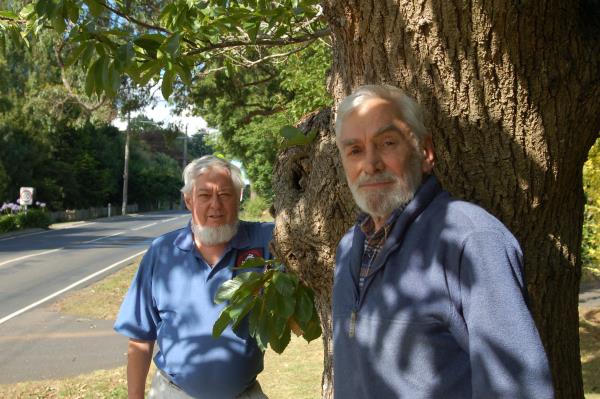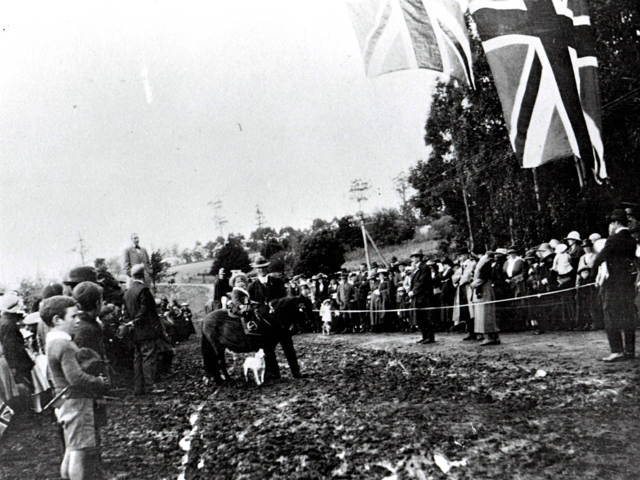“We have lost a lot to attrition” – Phil Garland
By MARK CLANCY
SOME 100 years after Gallipoli, Ferny Creek’s Avenue of Honour to the old soldiers of the Great War has all but faded away.
Planted to remember the men from the Sassafras and Ferny Creek districts who volunteered, and endorsed by a visit from one of history’s most famous royal figures, there is now little left of its founding ideals.
Only a few of the original 103 trees that were planted along Mt Dandenong Tourist Road east from One Tree Hill Road have survived a century of neglect and vandalism and few of the motorists who drive along the avenue’s length would even know it exists.
“We have lost a lot to attrition,” said Phil Garland, president of the Sherbrooke Foothills Historical Society.
And the trees have also suffered from official vandalism, and in particular from the power cables that run along the north side of the road, said Malcolm Johnson from the Mount Dandenong and District Historical Society.
“You can blame the electricity people chopping the life out of them.”
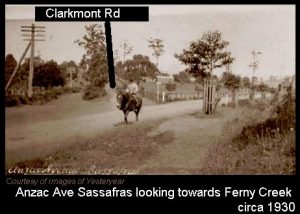
The idea of an avenue to honour those who went to fight in the war came from a public farewell for a volunteer from Sassafras in July 1916.
On 12 August the same year, 60 chestnut trees were planted along both sides of the newly-built stretch of Mount Dandenong Tourist Road from the Sherbrooke Road junction to the north end of Clarkmont Road.
The aim was to plant additional trees as more volunteers signed up and locals soon started referring to the trees and the new road as Anzac Avenue, with official permission to use the name granted a year later.
According to the Treenet Avenues of Honour project database the avenue is possibly the second in Victoria, after Eurack.
“They were created by a committee of local citizens who raised the funds and there was a tree planted for each man who enlisted from the area,” Mr Garland said.
Each tree along the avenue was protected by a tree guard to which was attached a numbered copper plate with the name of each man who signed up.
And while it was still full of its original promise the avenue was given a regal boost with the 1920 visit from the then Prince of Wales, later to become the abdicated Edward VIII.
On his official visit he planted an acacia tree, which was brought back from Jerusalem by a returned soldier, at the end of the avenue.
However, in a portent of the neglect that was to signal the avenue’s demise, no-one remembered to care for the royal tree and it soon died.
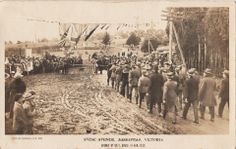
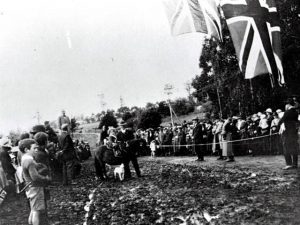
Twenty-one years after the end of the Great War, and with the spectre of the Second World War rising, the stone memorial to the volunteers on the corner of Sherbooke Road and Mount Dandenong Tourist Road was unveiled on 20 May 1939.
Bob Richards, secretary of the Dandenong Ranges RSL, thinks the memorial may have been built by returned Diggers because they saw the need for a more permanent tribute.
The monument, which was refurbished this March, included a brass plaque with the names of the volunteers and their corresponding trees.
It shows that the trees numbered one to 46 were on the east side of the road going north and that tree numbers 47 to 104 were planted on the west side going south. However, the plaque only lists 103 names.
And the avenue’s condition wasn’t helped by a report in The Age in April 1952 telling its readers how easy it was to collect fallen chestnuts along the road.
The next month the paper realised what it had done and reported residents’ disgust with the “wanton destruction” as visitors used sticks and climbed and broke branches in their scramble to collect the nuts.
The avenue’s decline over the years didn’t go unnoticed but little was done to successfully address the problem.
In 2004 the president of the Dandenong Ranges RSL, Lex Gray, then 76, told The Age that members had tended to the trees in the past but had not done so for decades.
“We try and help but we don’t have the money,” he said.
Mr Garland said that while the avenue shows the signs of its mixed fortunes, there may be hope for it.
“The trees that survived aren’t too bad. Some of the smaller trees may have been replanted to replace ones that had died,” he said.
“Where there are stumps you could stump grind them to replace the ones where we know we have lost them.”
Mr Richards said that the avenue was now commemorated through recent improvements to the Sherbrooke Road memorial, but that the RSL was looking for more official acknowledgement for the avenue.
“We have also written to VicRoads and we want an historic monument sign erected.
“We would also like VicRoads and the council to make awareness of the avenue more prominent by having the stretch of road signposted as Anzac Avenue.
“We don’t have any plans to recreate the avenue of honour because the trees would now be considered exotics and we wouldn’t be allowed to, so we don’t think it would be practical.
“It’s not out of the question. We would need the complete support of the locals and council,” he said.

